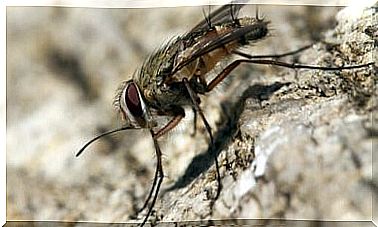Addison’s Disease In Dogs: Symptoms And Treatment

Known in the veterinary world as hypoadrenocorticism, Addison’s disease in dogs produces symptoms in your pet that are very similar to those that humans suffer when we suffer from it.
This occurs when the dog’s own body is unable to produce the correct amount of certain hormones on its own, such as the hormone cortisol. The adrenal glands produce less or no hormones than usual, which causes the animal a multitude of problems.
Although it is not necessarily fatal, it is a condition that must be treated strictly so that the dog can lead a normal life, and early detection will make all the difference.
Symptoms of Addison’s disease in dogs
Due to the type of development that Addison’s disease has in dogs, it is very difficult to realize the problem until the animal shows severe and serious symptoms. It is difficult for a veterinarian to say that the pet suffers from this disease first, since the symptoms are similar to those of other more common diseases.

The dog gradually suffers from vomiting and diarrhea more and more frequently, while gradually losing weight until reaching levels of anorexia. The first thing you will notice will be a loss of vitality, with less strength than it usually has, and even a certain depression.
It becomes more apparent that it is Addison’s disease when the dog starts shaking and his heart rate drops markedly; the severity at this time is extreme and must be treated as soon as possible.
If the dog suffers from these symptoms and they are due to Addison’s disease, the vomiting or diarrhea will reappear, while if it were another more common ailment, with a simple treatment the problem is definitively cut.
In order to detect the disease, the animal must be thoroughly examined, with blood and urine tests, an X-ray in the abdominal area and, if necessary, an ultrasound also in the abdominal area.
If the veterinarian believes that the result of these tests can be treated for this disease, he will recommend a test to verify it 100%, which is called an ACTH stimulation test. ACTH is the hormone that stimulates the adrenal glands, which are responsible for releasing glucocorticoids and mineralocorticoids. This test takes a few hours of hospitalization, but it is worth it.
Treatment of Addison’s disease in dogs
The danger to the life of the animal will depend on the stage of development of the disease. If it is detected early it can be controlled without problems, but if it arrives in an advanced state where the dog’s pulse is weak and the blood pressure is too low, his life is in serious danger.

The first thing to do is give fluids intravenously to hydrate the animal. Once the dog has an acceptable level of hydration, it must be supplied with hormones that the body is not able to apply on its own.
Glucocorticoids are given first , although some animals also require mineralocorticoids, which can be given by pills or intravenously.
The downside is that this does not cure the disease, but rather camouflages the symptoms by adding what the body needs to maintain its optimal state. As a consequence, Addison’s disease in dogs requires you to visit your pet regularly to the vet to keep their hormonal levels at optimal levels.
As a positive point, dogs that suffer from this terrible disease can lead a full life, with all the vitality that they had before. Sometimes it is necessary to modify the doses of hormones to maintain them at 100%, but despite being a chronic disease, the dog will live a full and happy life.









